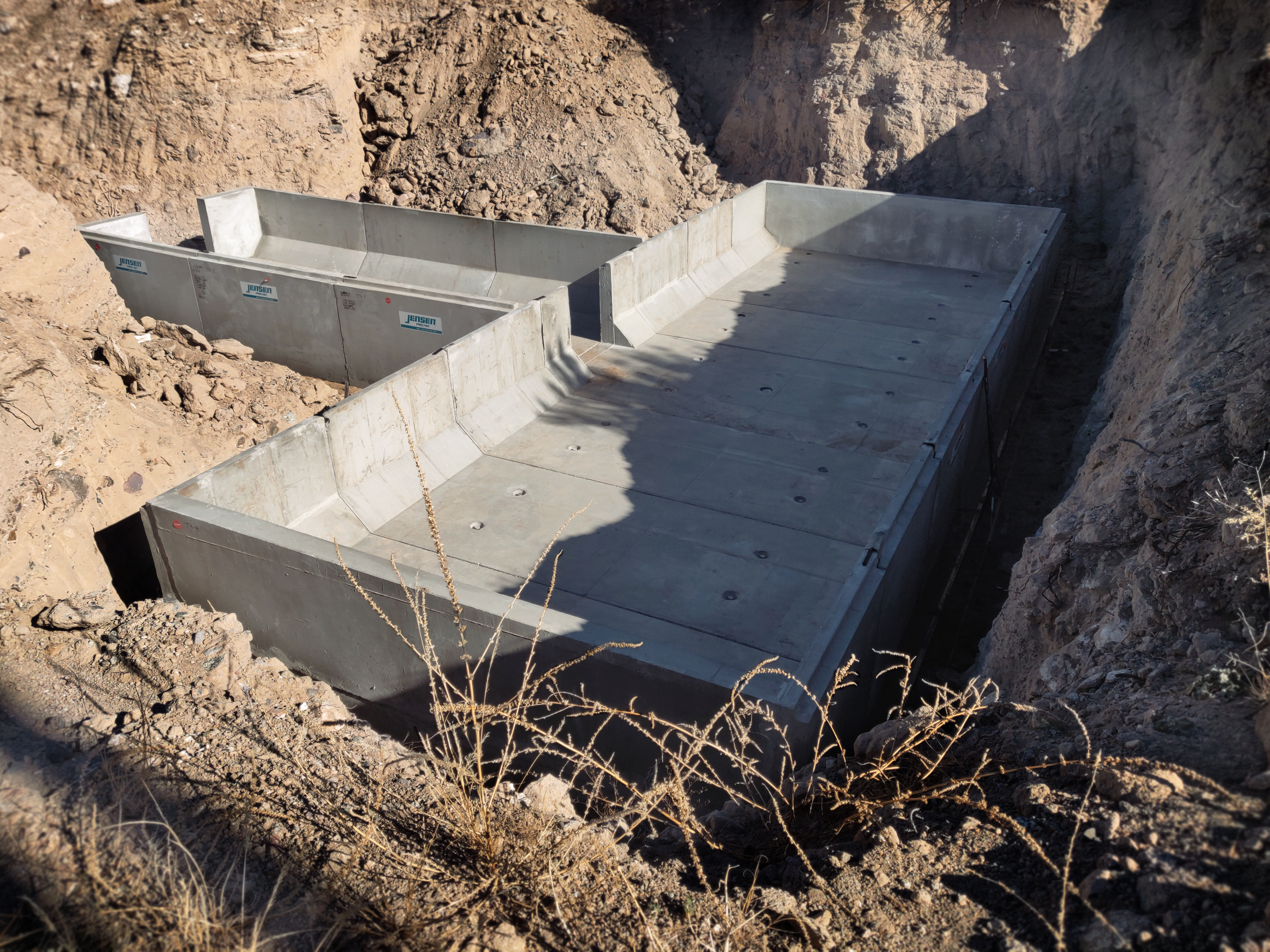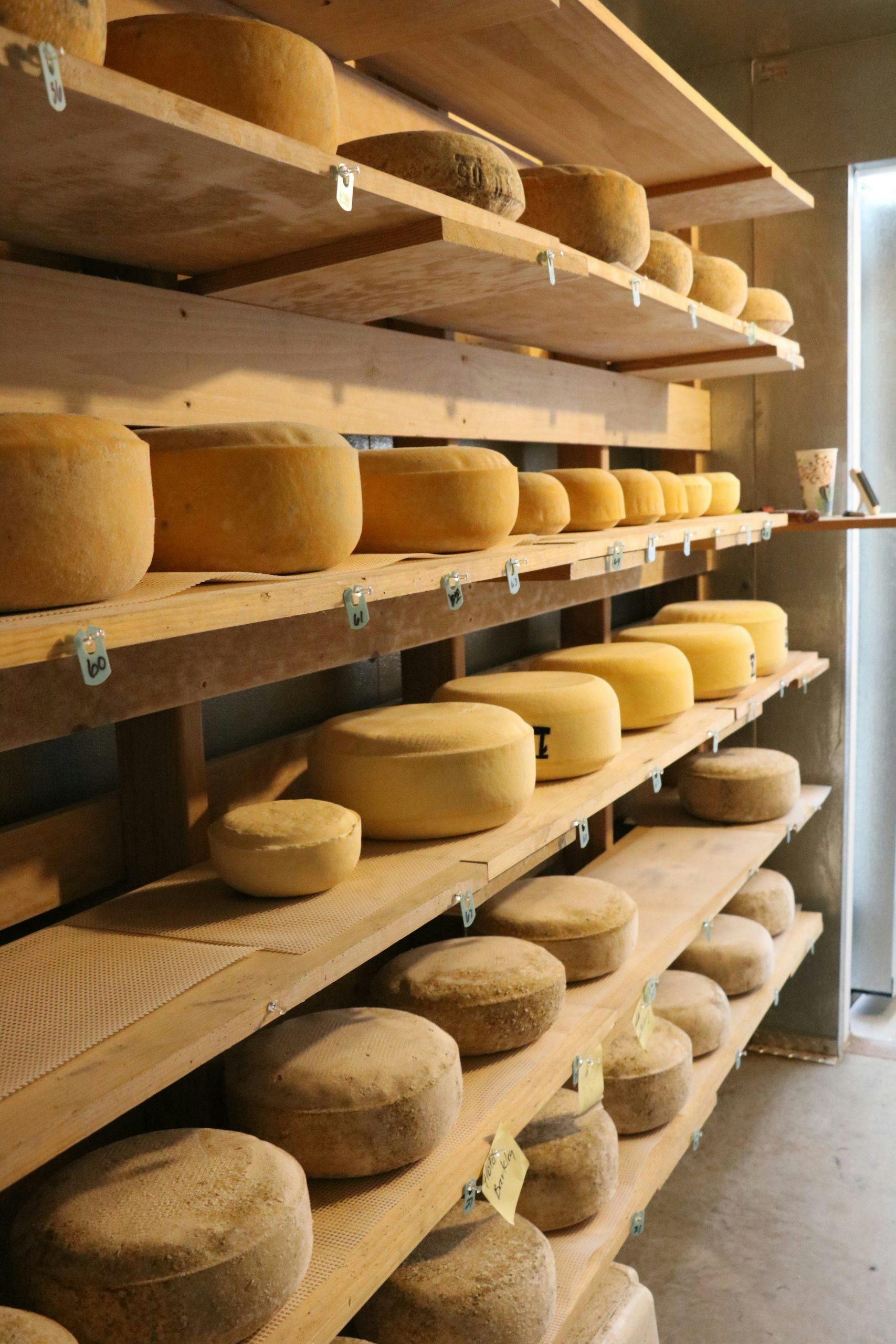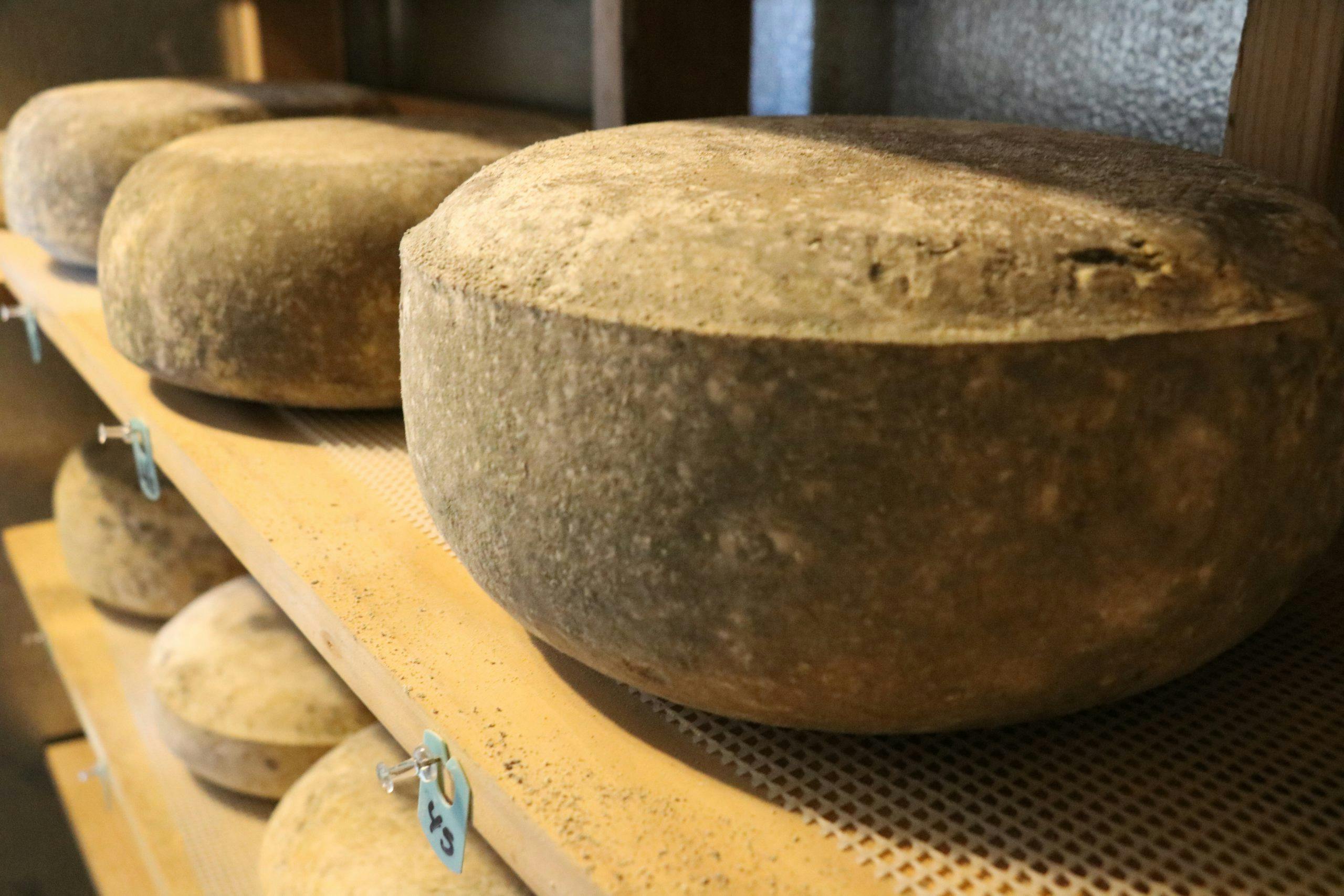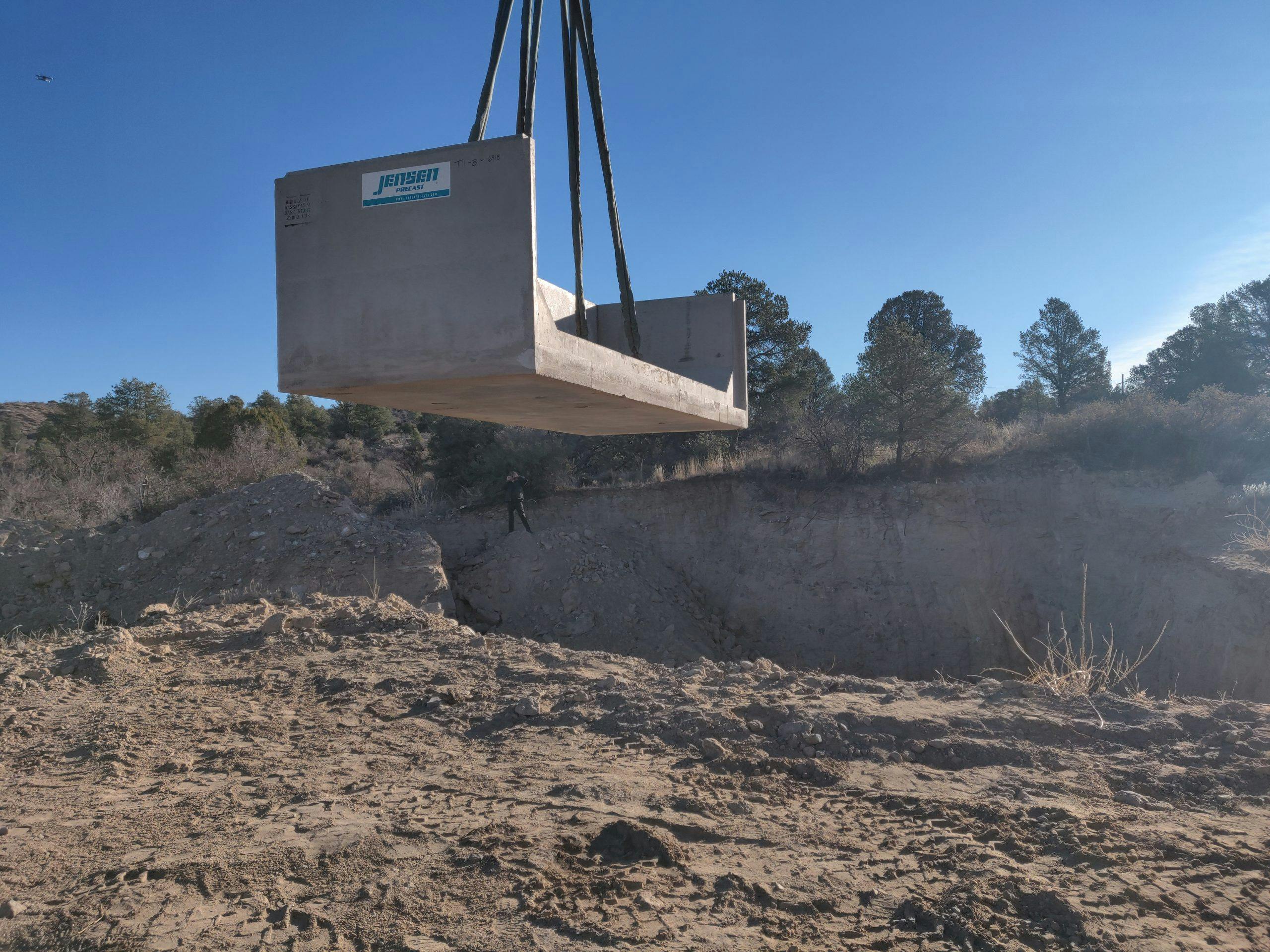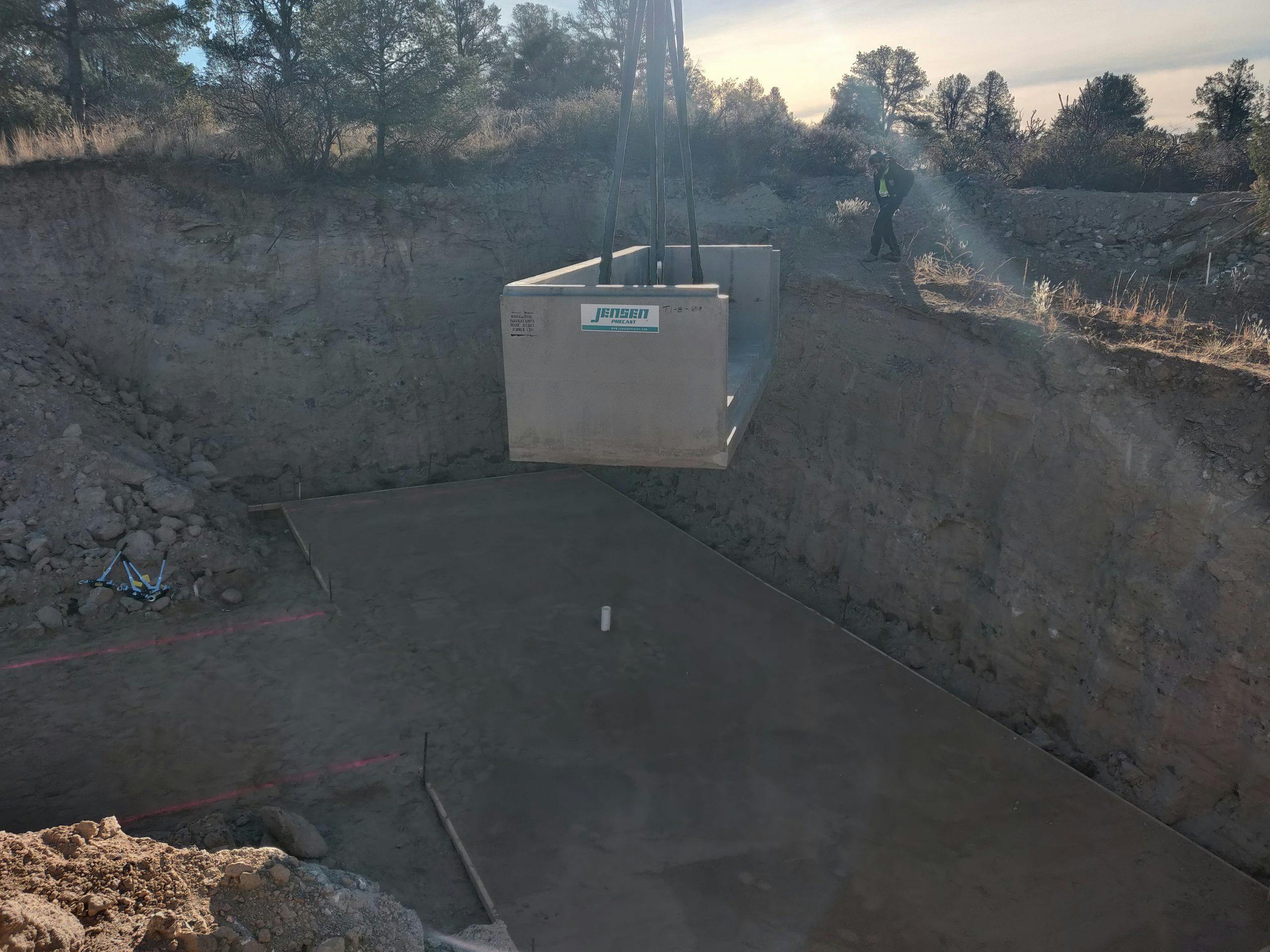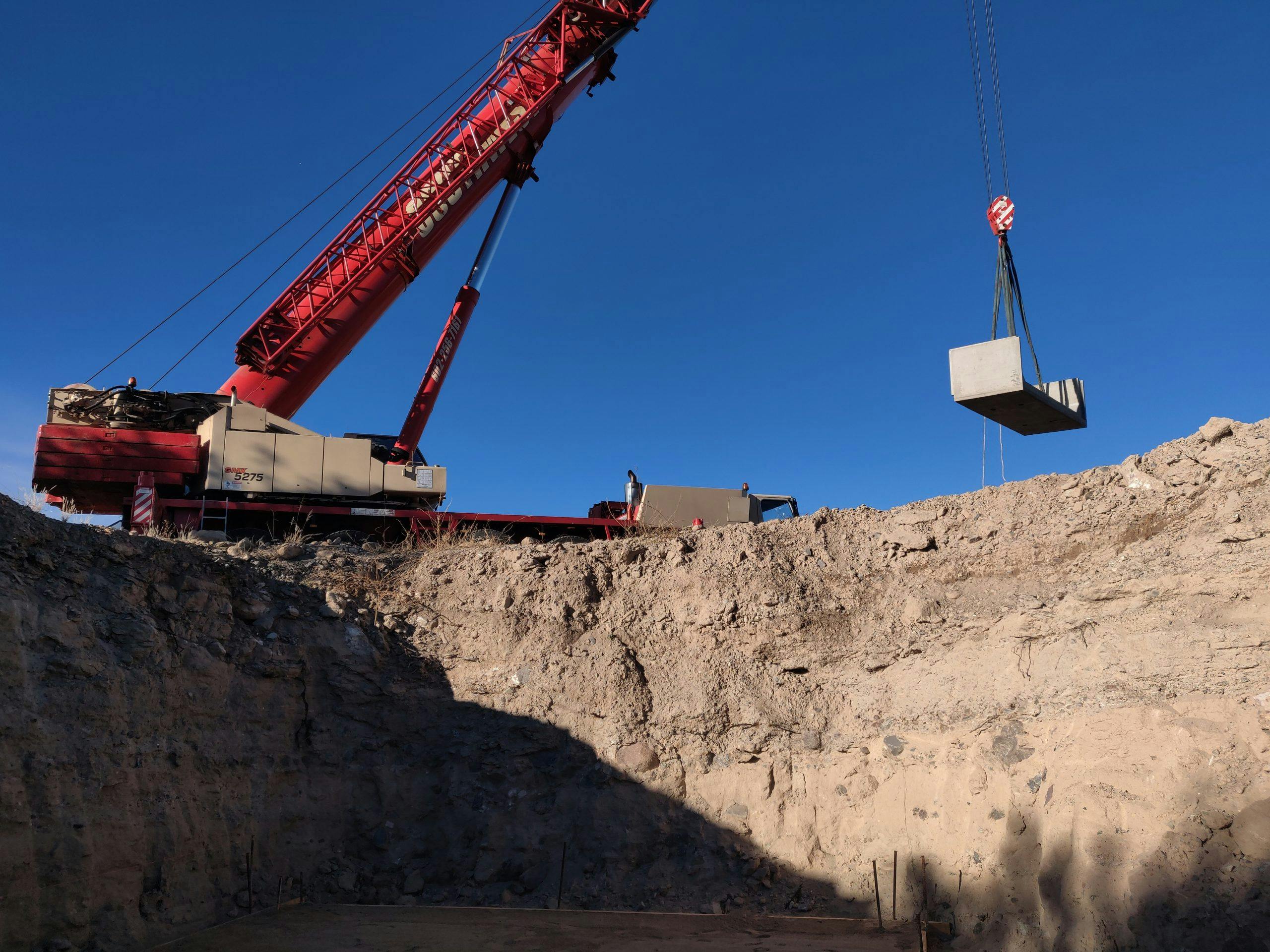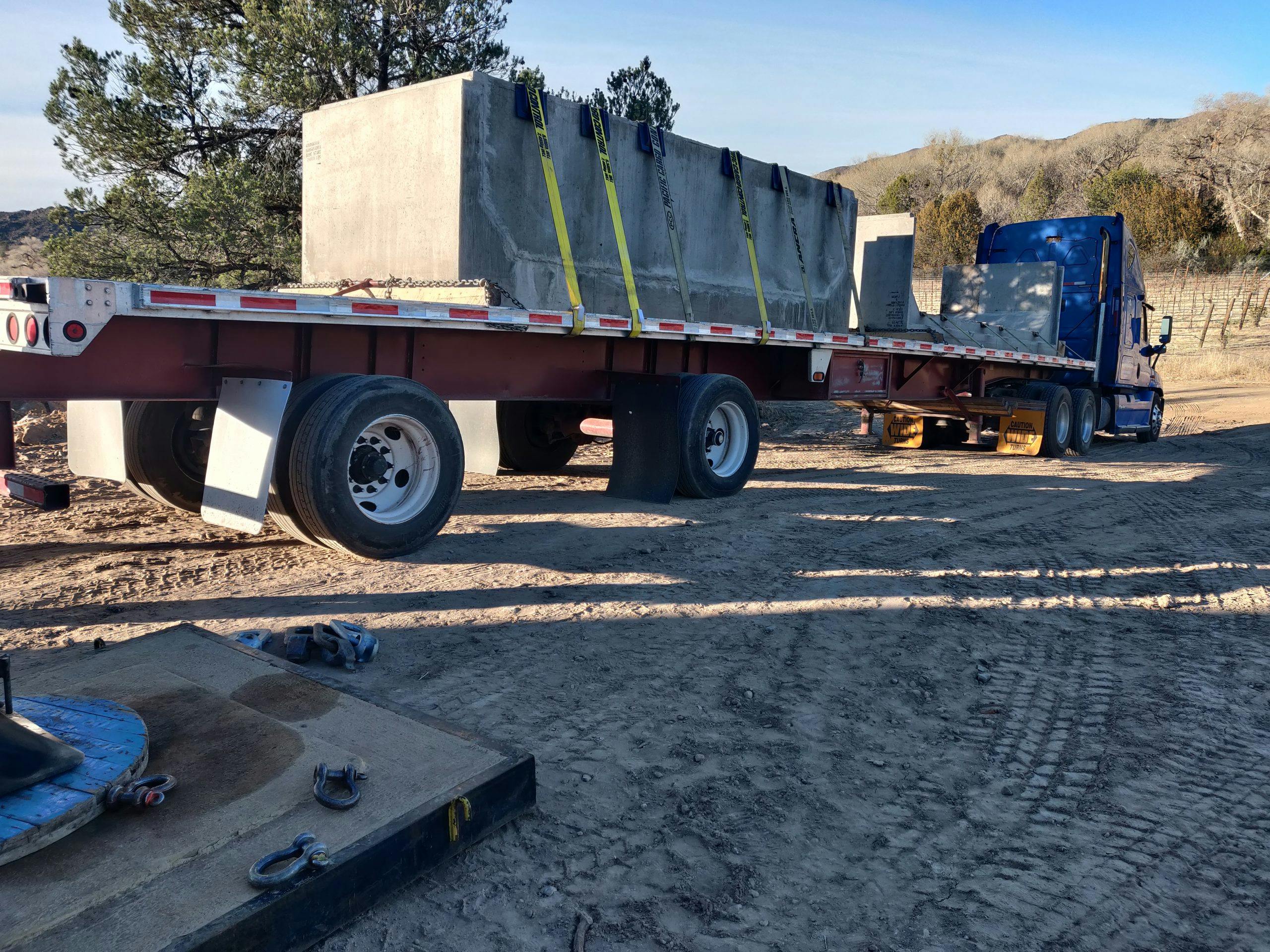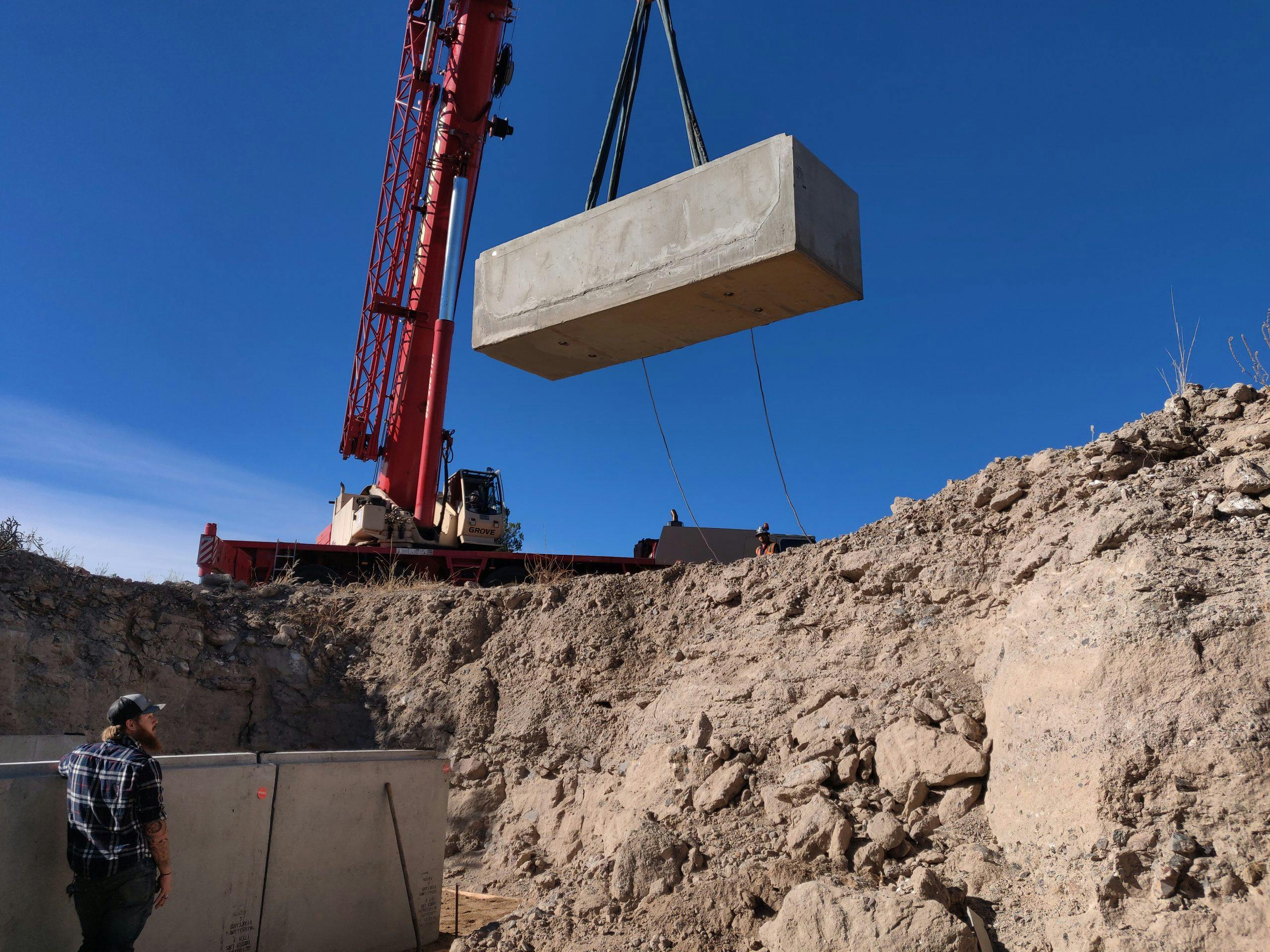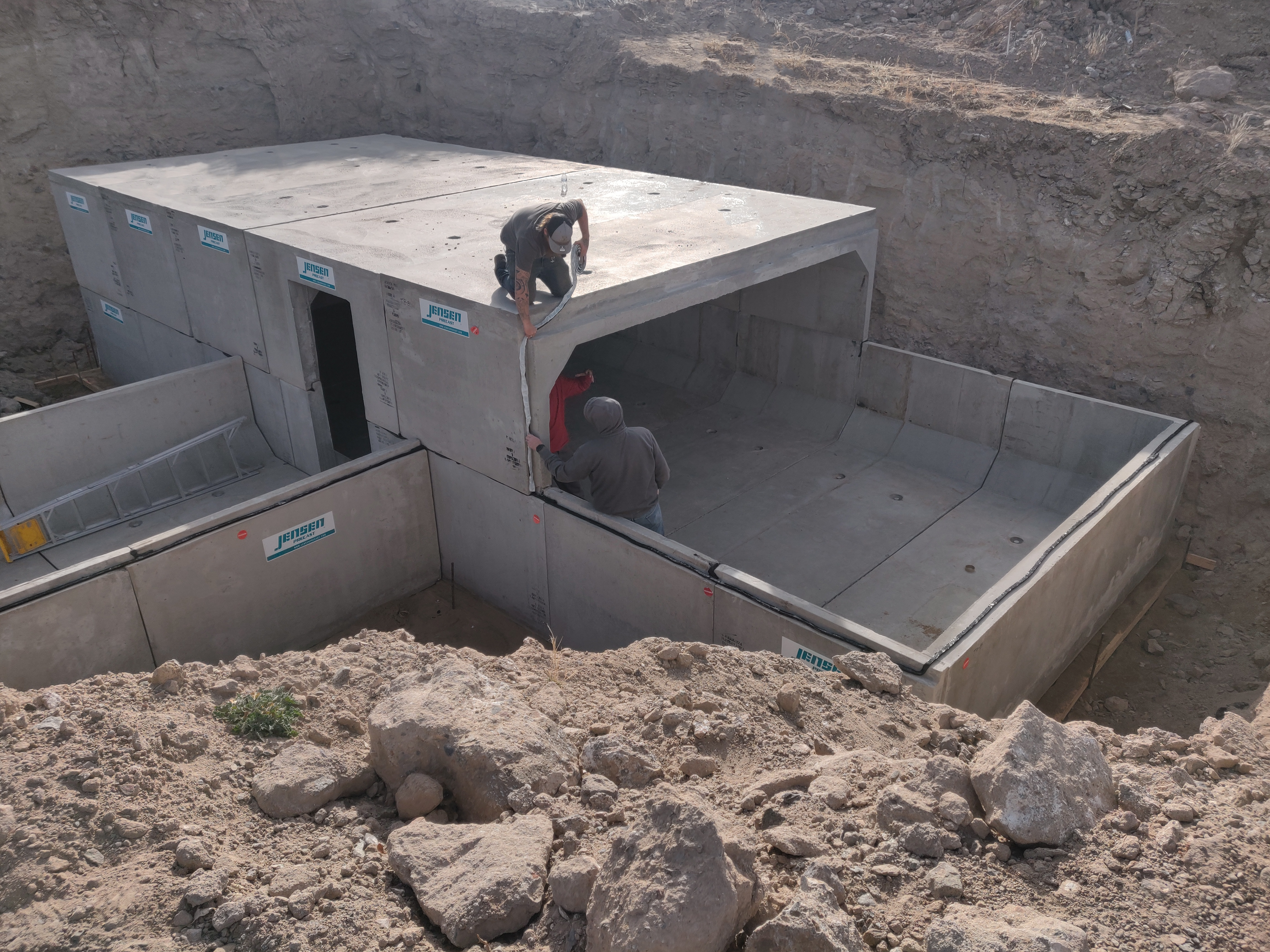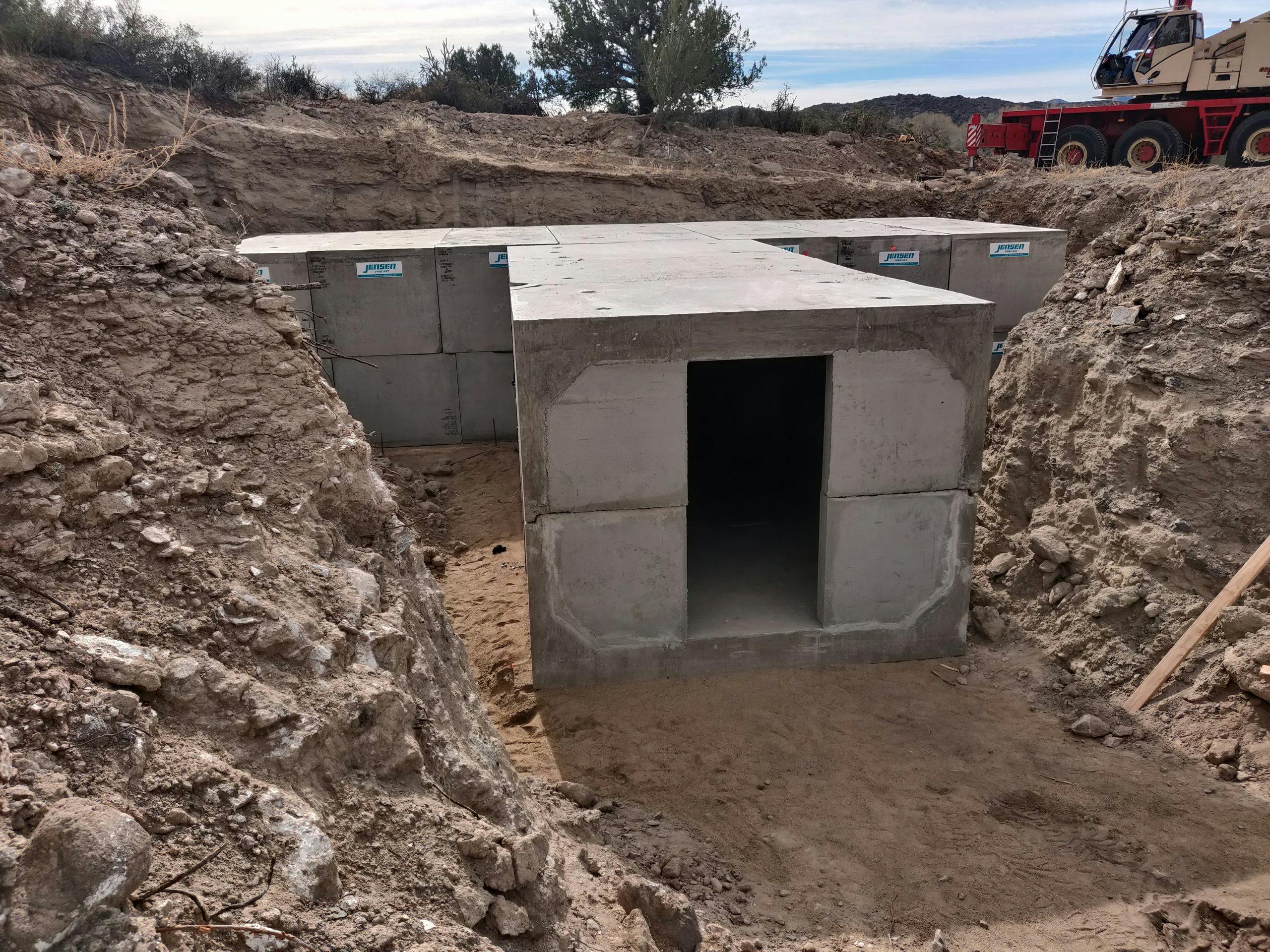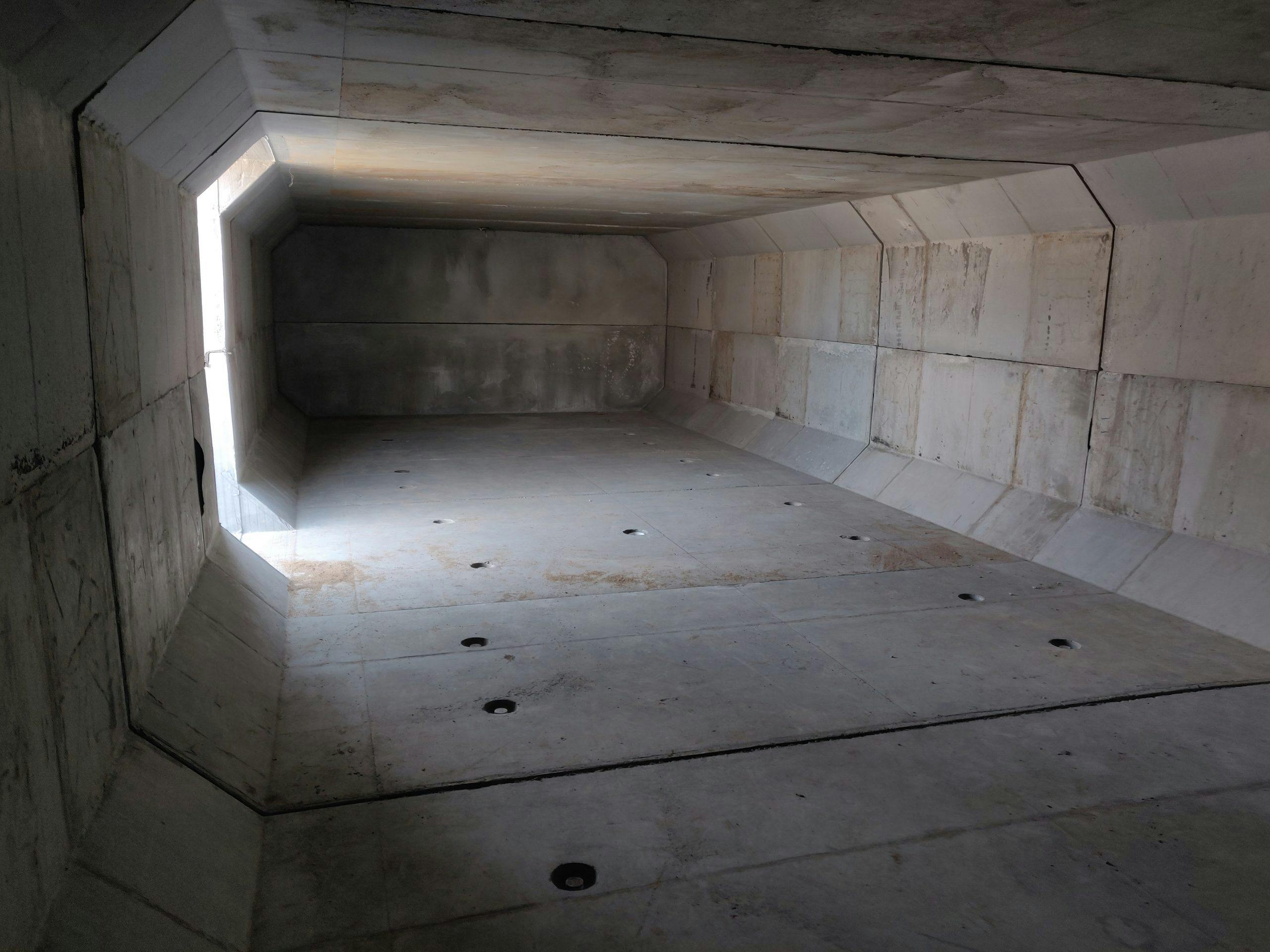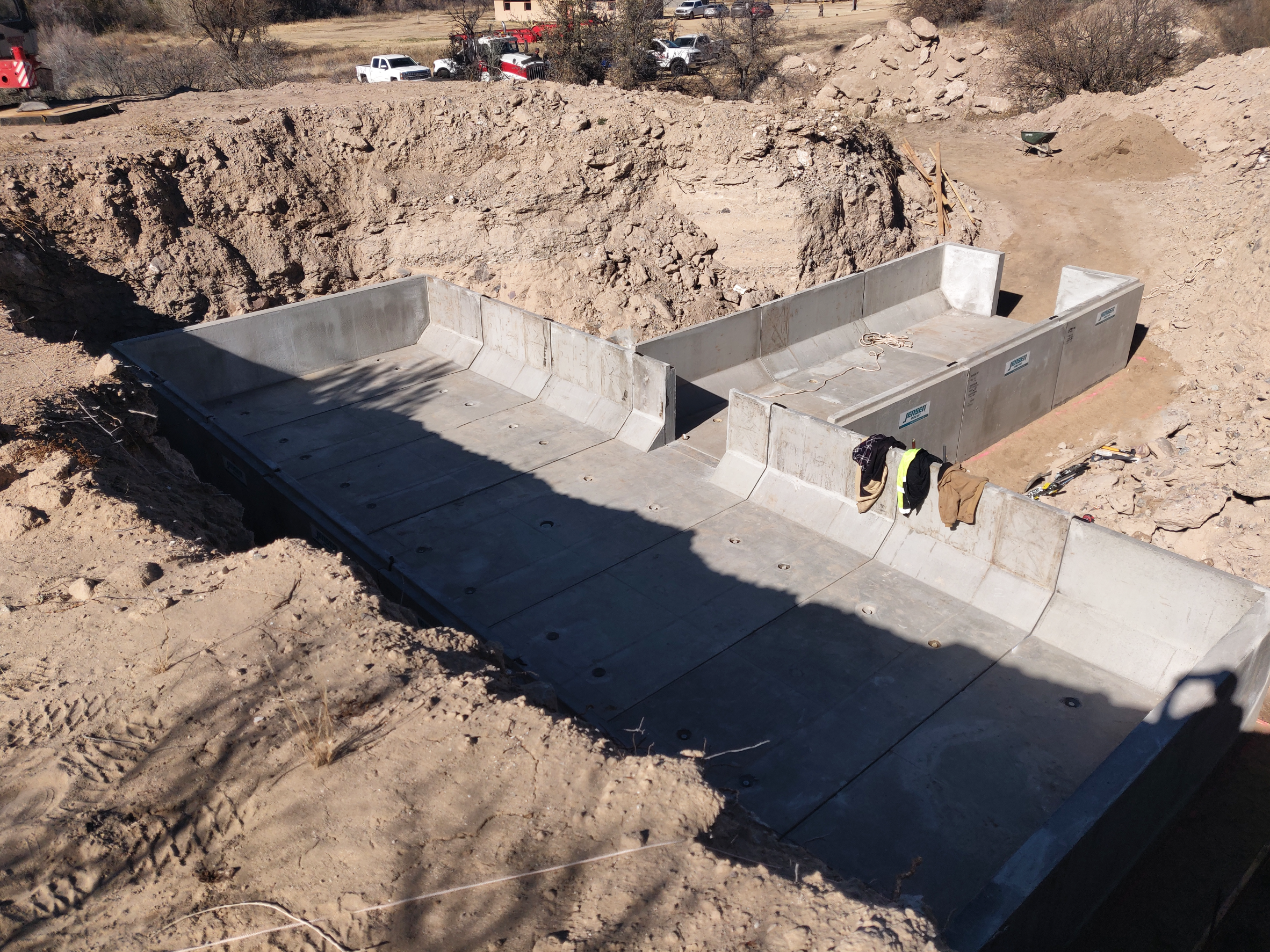A Precast Cure for Arizona Cheese Artisans
Kirkland, Arizona
Josh Meyer and Jesse Couch would do well in the precast concrete industry. They are passionate about quality, believe in controlling every facet of production, and pay attention to the details that go into mixing, production, and curing.
Except Meyer and Couch are not making concrete. They are making cheese. Meyer owns the Hassayampa Vineyard & Farm in Kirkland, Arizona, and Couch serves as the operations manager.
The pair are cheese artisans. Along with their cheesemaker, Susan Vierra, a small crew, and a dozen or so dairy cows to provide the milk, they craft two types of artisan cheese in the Asagio style called Hassiago. One is a Pressato, which is a young aged cheese, and the other is a d’Allevo, which is medium aged. The Pressato melts easily and is used in sandwiches. The d’Allevo has a more complex flavor and is used on cheeseboards and for grating over salads and dishes. These are small batch cheeses, served in fine restaurants and wine shops around Phoenix, Arizona.


Looking to solve a problem with storage and walk-in cooler maintenance, the Hassayampa cheese crafters found the cure when they met up with the precast concrete artisans at the Jensen manufacturing facility in Phoenix. They wanted to buy some box culvert and bury the products underground to store the cheese in a more temperate setting.
Just as with precast concrete, the crafting of artisan cheese is about controlling every aspect of production—from the daily cow diet and the raw milk produced to the blending of ingredients and the forming of the cheese wheels and curing. And every other step in between. It was at the curing stage where Meyer and Couch wanted more control. The walk-in cooler they were using to cure the cheese was high maintenance, inefficient, and too small.
They wanted a cheese cave.
After doing their research and visiting cheese operations in Vermont, they contacted Jensen. A box culvert cheese cave would give them the temperature control and storage space needed to reduce labor and greatly increase curing space.
Labor Intensive
In the walk-in cooler, the fans were always blowing, which would cause the cheese to dry out instead of naturally curing. It was too labor intensive.
“The boss is a purist, and he wants a natural rind,” Couch says. “So we don’t coat the cheese or anything, which means you’re always wiping it down with brine and you’re always turning the cheese wheels and moving them around the room. So the cheese cave will be a lot less work because the humidity and temperature will be easier to keep steady without the blowing air.”
Space was also an issue. The farm produces about 10,000 pounds of cheese annually, and each wheel needs to age from about two to eight months, depending on the variety. They were stacking the cheese wheels, which weigh 9 to 12 pounds each, and looking for extra storage space in the brine room.
“It was just getting unsustainable,” Couch says.
Quality Control
Proper curing is essential to final quality, as all precasters know. When Meyer and Couch met with Rob Larson and Brian Hartsfield at the Jensen Phoenix facility, they were speaking the same language.
After seeing a box culvert cheese cave in Vermont, Meyer thought the project would be a cinch. “I just expected to get some generic box culvert that we could bury,” he says.
Ed Halliburton of R.A.C.E. GRADING in Dewey, Arizona, worked with Couch on the initial design concept. Once into the details, they decided that the best approach would be to consult with a precast concrete manufacturer and found their way to Larson and Hartsfield to nail down the specifications.
“We realized for liability and safety reasons that it needed to be an engineered structure,” Couch says. “We called up Jensen, and they were like, ‘Yeah, let’s do this.’ They thought it was a great idea.”
Hartsfield is the Sales Manager at Jensen Phoenix. “Jesse called, and we put the concept on paper,” he says. “It was more of a design-build project in a sense. We had to figure out what they wanted, and then we came up with a size, configuration, and some of the features.”
The final structure ended up as a T-shaped box culvert cave with 20 pieces of box culvert and entry sections. The stem of the T is 24’ long and serves as the production area. The top of the T, where the cheese is aged, adds another 16’ 3” to the overall length and spans 41’ 2” across. The boxes are 84” high.


The Precast Solution
Halliburton and the R.A.C.E. team orchestrated the project from start to finish, including scheduling, securing the crane, running electrical connections, and installing drains, fans, and other accessories. Their plan was to install the cave into the side of a hill. The terrain of the farm offered just the right spot. Located at 3,800’ elevation near Weaver Mountains southwest of Prescott, Arizona, it is hilly and semiarid country.
“We did a bunch of excavation and hammering the rock out of the hill,” Halliburton says. “Then we leveled the bottom for the cave to be set. We didn’t have to build a mountain. We dug the mountain out, put in the cave, and then put the mountain back.”
The backfilling returned the terrain to its natural look, with only the entrance visible. The cave has 6’ to 7’ of cover, which, along with the insulating value of the precast structure, will keep the temperature fairly constant. The cave takes less energy, less maintenance, and offers more climate stability than the walk-in cooler.
Once the site was ready, Jensen staged 10 deliveries over two days, with each flatbed hauling two pieces. Pieces weighed from 19,000 to 25,000 pounds, with a total weight of 422,700 pounds. It took a 170 ton crane to install the pieces.
“It went together really well,” Halliburton says. “We didn’t have any issues putting it together, and it came out exactly right.”
First temperature tests of the cave were right on target. “It was maintaining 55 degrees (Fahrenheit) earlier in the spring without any cooling. Now it creeps ups to 60 or 62 degrees, so we put in a wine cooling unit to keep it at 55 degrees. That’s the perfect temperature for aging cheese.”
Positioned to Grow
With the additional space provided by the cheese cave, the Hassayampa operation is positioned to grow, but Meyer says they are not in a hurry. The winery is evolving. Most of the 12 acres of grapes are sold to the Javelina Leap Vineyard, Winery & Bistro in Cornville near Sedona, Arizona. In the meantime, Couch is refining his own winemaking skills and crafting small batches of wine for private use.
For now the Hassayampa Vineyard & Farm is a side project for Meyer and Couch, albeit an ambitious one. In what he calls his “day job,” Meyer is a commercial property investor and manager of massive leased mechanized farms. Couch assists in those operations.
“The wine and cheese business is kind of an experiment in small scale farming,” Meyer says.
While Meyer and Couch will continue to enjoy the fruits of their labor as Hassayampa grows, Hartsfield and Larson will continue to offer precast concrete as the perfect remedy for all kinds of infrastructure challenges—public and private.
“This was a one-off type of project,” says Larson, Inside Sales Representative at Jensen Phoenix. “It’s exciting for us when we get to do projects like this. You don’t see it every day. To be able to work and collaborate with customers like Josh and Jesse makes it a really enjoyable project.”
Precast concrete offers a variety of benefits for cheese and wine producers. Contact us for a quote for your project.
